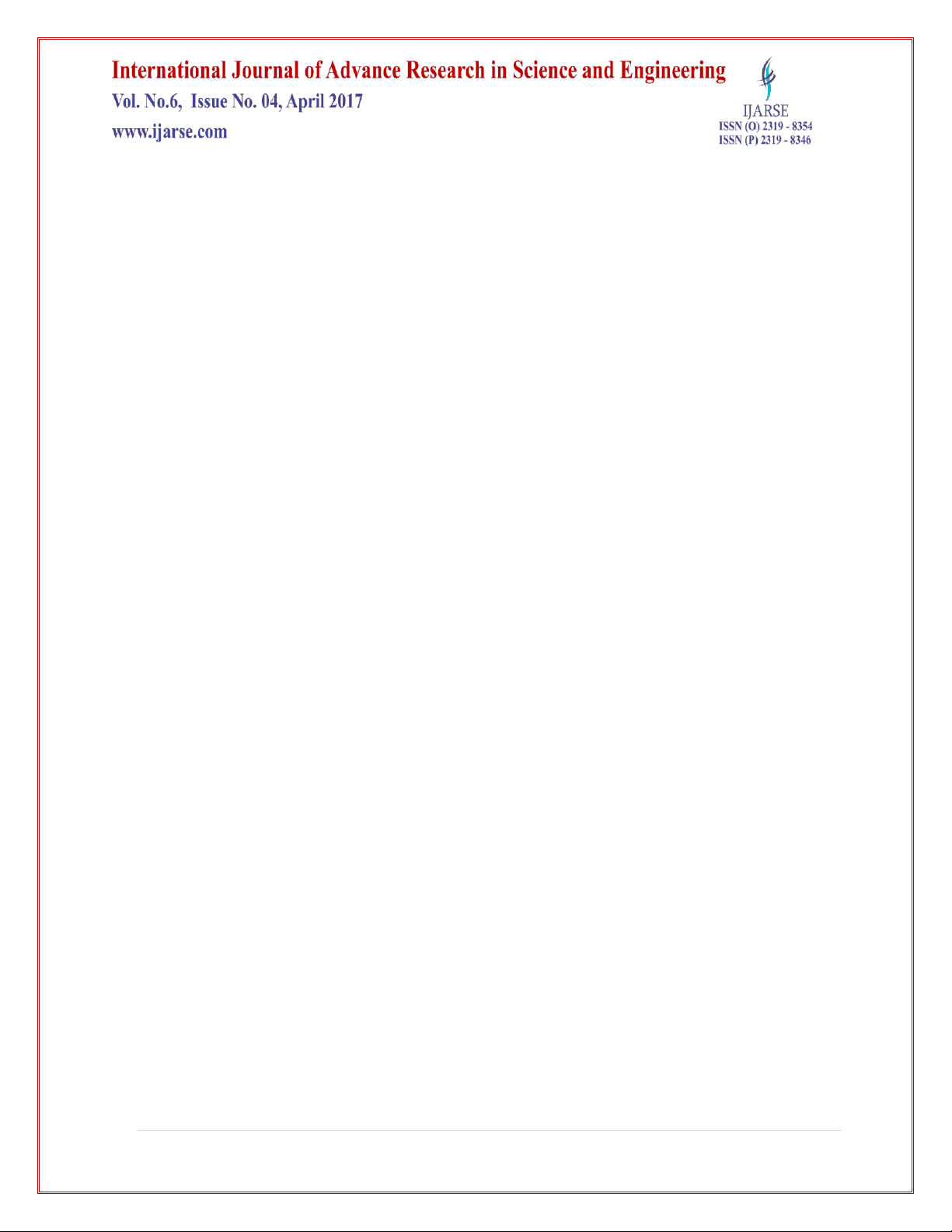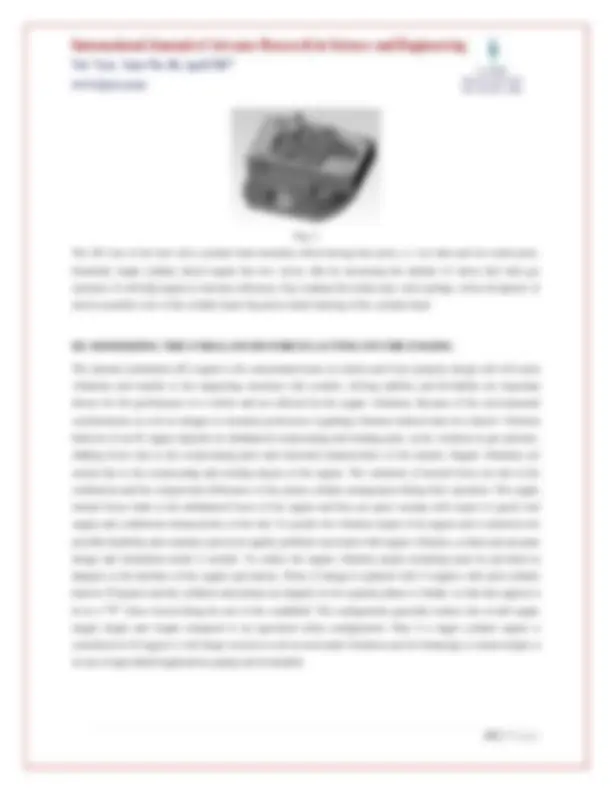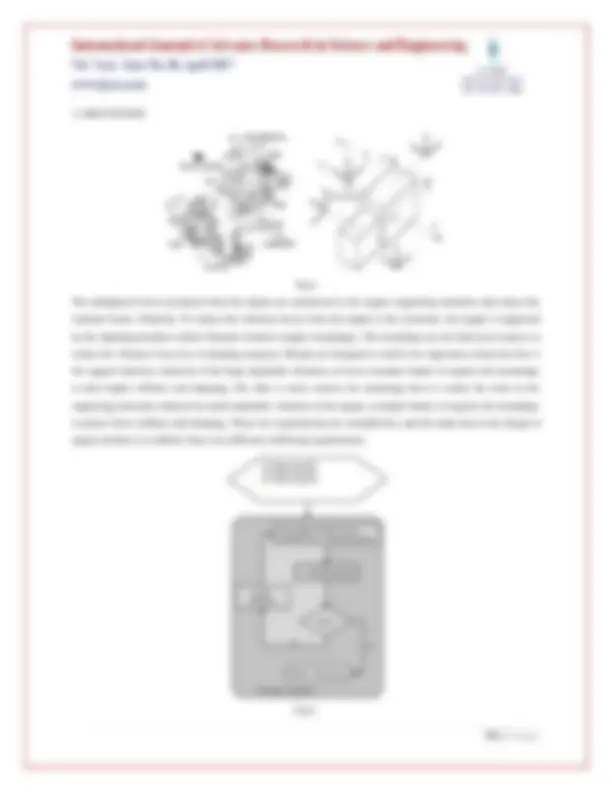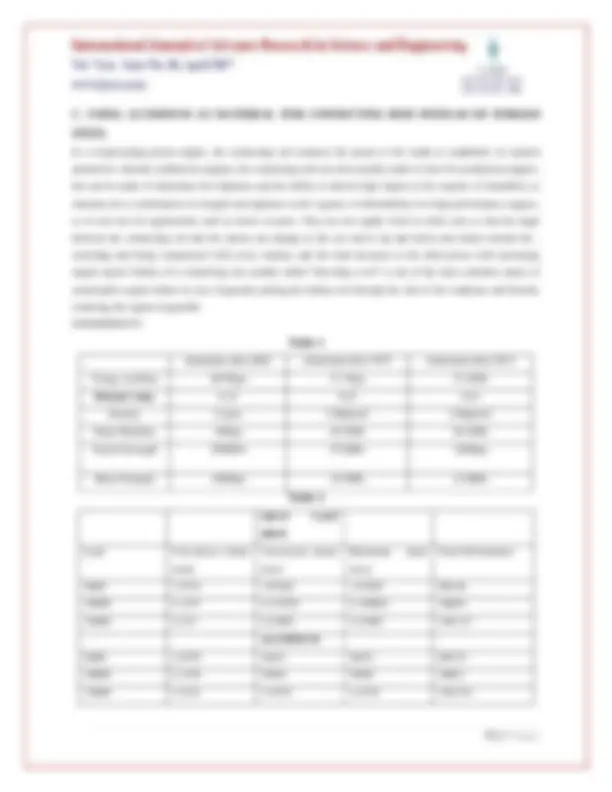





Study with the several resources on Docsity

Earn points by helping other students or get them with a premium plan


Prepare for your exams
Study with the several resources on Docsity

Earn points to download
Earn points by helping other students or get them with a premium plan
Community
Ask the community for help and clear up your study doubts
Discover the best universities in your country according to Docsity users
Free resources
Download our free guides on studying techniques, anxiety management strategies, and thesis advice from Docsity tutors
The performance and evaluation of a 4 stroke diesel engine, focusing on modifications to improve efficiency, reduce weight, and minimize vibrations. The authors explore the use of a 4-valve mechanism, aluminum connecting rods, and optimal liner materials to enhance engine performance and reduce heat absorption.
Typology: Lecture notes
1 / 6

This page cannot be seen from the preview
Don't miss anything!




The review paper covers view on modification of 4 stroke diesel engine. In this paper, we are trying to summarize the parameters and modification done in diesel engines with suitable experimental data and its scope in our project on Diesel engine. Our paper deals with modification at primary grounds to reduce weight, vibrations and improve efficiency by replacing the conventional model with robust design. Our profound study came to conclusion that parameters such as air fuel ratio, vibrations, proper material selection will impart required output. Prior to the data collected we are summing up our ideas with relevant concepts and calculations. Our paper will reveal important aspects and will prove beneficial for upcoming paper channelizing our research on diesel engine.
In diesel engine the common problem arises mainly in context of weight reduction, emissions, vibrations and durability, so to bring forth newer modifications a study must be made on the important parameters which contribute to account for the above factors. Given below are the modifications which will have positive outcome on diesel engine and these points will be considered for our study where our objective will be to design and perform thermal modeling on 4 stroke diesel engine. Firstly in context of air fuel ratio replacing the older 2-valve mechanism with newer and efficient 4-valve mechanism will ensure higher suction volume, complete combustion and less polluting exhaust. In case of vibrations minimizing the unbalanced forces acting on the engine will ensure durability by lowering fatigue failures and will check uniformity of forces acting on it. On considering comparative analysis on materials replacing aluminum as material for connecting rod instead of forged steel will ensure additional benefits and one of the important aspect for thermal considerations consist selection of liner materials for lower heat
absorption.
In Conventional diesel engine, mostly 2 valves mechanism were used, but after discovery of 4 valves studies illustrated that 4 valves system proved to be beneficial in terms of thermal efficiency and other factors.
A sample calculation highlights the comparison and data which reveals that according to the study 4 valve system is
efficient.
3D representation of 4 valves
Representation of 2 valves
Fig. 1 In the above example if the bore is kept of same diameter = 80 mm Then, if observed in side view the air flow area will be For 2 valve = pidiameterHeight of valve opening = pi43 =215pi mm For 4 valve = 2pi30 = 300*pi mm So in accordance of considered example we can conclude that four valve system can impart and provide more air flow can give more thermal efficiency. By performing CAD modeling on the a model of 4 valves single cylinder diesel engine is made which gives idea about quantity of material required, overall dimensions of head. The above two figure depict the same.
Fig. 3 The unbalanced forces produced from the engine are transferred to the engine supporting members and causes the structure borne vibrations. To reduce the vibratory forces from the engine to the structures, the engine is supported by the damping members called vibration isolators (engine mountings). The mountings are the final most sources to reduce the vibratory forces by its damping property. Mounts are designed to satisfy two important criteria the first is the support function, reduction of the large amplitude vibration, at lower resonance bands. It requires the mountings to have higher stiffness and damping. The other is noise control, the mountings have to reduce the noise in the supporting structures induced by small amplitude vibration of the engine, at higher bands. It requires the mountings to posses lower stiffness and damping. These two requirements are contradictory, and the main aim in the design of engine mounts is to stabilize these two different conflicting requirements.
Fig.4.
In a reciprocating piston engine, the connecting rod connects the piston to the crank or crankshaft. In modern automotive internal combustion engines, the connecting rods are most usually made of steel for production engines, but can be made of aluminum (for lightness and the ability to absorb high impact at the expense of durability) or titanium (for a combination of strength and lightness at the expense of affordability) for high performance engines, or of cast iron for applications such as motor scooters. They are not rigidly fixed at either end, so that the angle between the connecting rod and the piston can change as the rod moves up and down and rotates around the. stretching and being compressed with every rotation, and the load increases to the third power with increasing engine speed. Failure of a connecting rod, usually called "throwing a rod" is one of the most common causes of catastrophic engine failure in cars, frequently putting the broken rod through the side of the crankcase and thereby rendering the engine irreparable. EXPERIMENTS
Aluminum alloy 6061 Aluminum alloy 7075 Aluminum alloy 2014 Young modulus 68.9Gpa 71.7Gpa 72.4GPa Poisson’s ratio 0.33 0.33 0. Density 2.1g/cc 2.80g/cm3 2.80g/cm Shear Modulus 26Gpa 26.5GPa 26.5GPa Tensile Strength 290MPa 572MPa 220Mpa
Shear Strength 186Mpa 331MPa 124MPa
Load Von-misses elastic strain
Von-misses elastic stress
Maximum shear stress
Total Deformation